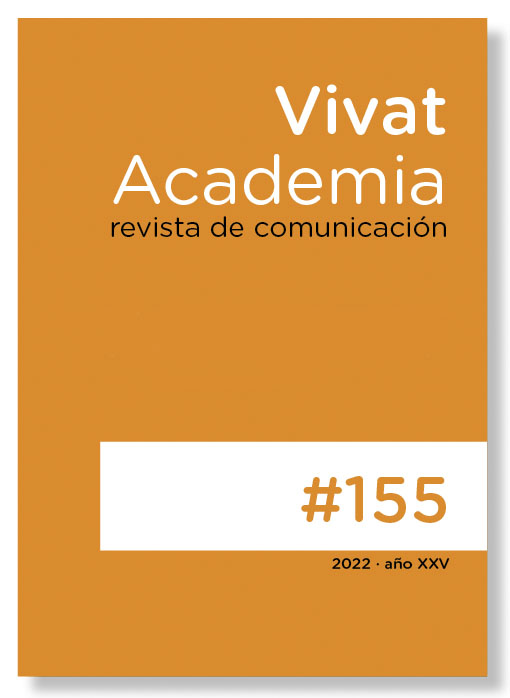Identification of fake news published in the paper edition of a provincial newspaper in the era of Trump's digital disinformation and the start of COVID
Main Article Content
Abstract
Fake news has become a problem in the general information society and owes its pre-eminence, to a large extent, to the democratization of social networks and the polarisation of different kinds of forces. But beyond the digital channels, there is a public, in this case of a local-provincial nature, which follows the news as it has traditionally done: mainly through its newspaper of reference, in print. This paper analyses, quantitatively and qualitatively, the contents related to fake news appearing in the printed version of Diario Información, between 3 February 2020, the start of the US election campaign and the appearance of the first case of coronavirus in Spain, two clear events that lead directly to fake news in origin or destination, until 21 January 2021, the day following the start of the Joe Biden era. The aim is to try to find out whether the acerbic debate and the prominence of fake news in digital channels have a proportional transfer to the pages of this newspaper and whether they are priority issues for the reader. The study makes it clear that, compared to the bombardment and noise surrounding fake news in social media, in the print press there is a predominance of calm reflection, analysis of the problem, and a clear and endorsed denunciation of this message. And what is more important: it is almost no news for the paper.
Downloads
Article Details

This work is licensed under a Creative Commons Attribution-NonCommercial-ShareAlike 4.0 International License.
The main author must deliver the letter of transfer of copyright, according to the model provided by Vivat Academia, Revista de comunicación, which declares the transfer of copyright to the journal and make explicit the rights of authors regarding the dissemination and use of the manuscript once published.
Creative Commons Attribution/Non Commercial 4.0 International
References
Allcott, H., & Gentzkow, M. (2017). Social media and fake news in the 2016 election. Journal of economic perspectives, (31), 211-236. https://www.jstor.org/stable/i40177264
Alterman, E. (2004). When Presidents Lie: A History of Official Deception and Its Consequences. Penguin Books.
Arceneaux, N., & Weiss A. S. (2010). Seems stupid until you try it: Press coverage of Twitter, 2006-9. New media and society, 12(8), 1262-1279. https://doi.org/10.1177/1461444809360773
Cárdenas Rica, M. L., y Polo Serrano, D. (2019). La posverdad: Una cartografía de los medios, la redes y la política. Gedisa
Casals Carro, M. J. (2000). La columna personal: de esos embusteros días del ego inmarchitable. Estudios sobre el mensaje periodístico, 6, 31-51. https://revistas.ucm.es/index.php/ESMP/article/view/ESMP0000110031A
Centro de Coordinación de Alertas y Emergencias Sanitarias (s. f.) Situación actual. Resumen de la situación. https://bit.ly/3qI57oP
Costa-Sánchez, C. (2011). Tratamiento informativo de una crisis de Salud pública: los titulares sobre la gripe A en la Prensa Española. Revista de Comunicación de la SEECI, 25, 29-42. https://doi.org/10.15198/seeci.2011.25.29-42
De Pablo, I. (2018, 2 de febrero). Solo 14% de españoles sabe distinguir un "fake", pero 60% cree que puede. La Vanguardia. https://n9.cl/yiv0
Departamento de Seguridad Nacional del Gabinete de la Presidencia del Gobierno de España. (s. f.). Coronavirus (2019-nCoV) – 03 de febrero de 2020. https://bit.ly/3vhkV5v
Fernández Gil, J. R. (2010). Fuentes de análisis para el estudio de la prensa. Anales de Documentación, 13, 135-158. https://revistas.um.es/analesdoc/article/view/107101
Jackson, N., & Lilleker, D. (2011) Microblogging, Constituency Service and Impression Management: UK MPs and the Use of Twitter. The Journal of Legislative Studies, 17 (1), 86-105. https://doi.org/10.1080/13572334.2011.545181
Keyes, R. (2004). The Post-Truth Era: Dishonesty and Deception in Contemporary Life. St. Martin’s Press.
Lewandowsky, S., Ecker, U. K. & Cook, J. (2017). Beyond Misinformation: Understanding and Coping with the “Post-Truth” Era. Journal of Applied Research in Memory and Cognition, 6 (4), 353-369. https://doi.org/10.1016/j.jarmac.2017.07.008
Lippmann, W. (2003). La opinión pública. Langre
McIntyre, L. (2018). Posverdad. Cátedra.
McNair, B. (2018). Fake news, falsehood, fabrication, and fantasy in journalism. Routledge.
Murolo, L. (2019). La posverdad es mentira. Un aporte conceptual sobre periodismo y fake news. En R. Aparici y D. García-Marín (Eds.), La posverdad. Una cartografía de los medios, las redes y la política. Gedisa.
Pérez Serrano, G. (1984). El análisis de contenido de la prensa. UNED
Piñuel Raigada, J. L. (2002). Epistemología, metodología y técnicas del análisis de contenido. Estudios de Sociolingüística. 3(1) 1-41. https://bit.ly/2Ox0ZuT
Redacción (2020, 12 de abril). Líderes en los momentos más duros. Información https://bit.ly/3lcBtHb
Renda, A. (2018). The Legal Framework to Address “Fake News”: Possible Policy Actions at the EU Level. Document prepared for Policy Department for Economic, Scientific and Quality of Life Policies. European Parliament. https://bit.ly/38H8ztJ
Rodríguez-Ferrándiz, R. (2019). Posverdad y fake news en comunicación política: breve genealogía. El profesional de la información, 28 (3). https://doi.org/10.3145/epi.2019.may.14
Román-San-Miguel, A., Valenzuela, N. S. G. y Zambrano, R. E. (2020). Las fake news durante el Estado de Alarma por COVID-19. Análisis desde el punto de vista político en la prensa española. Revista Latina de Comunicación Social, (78), 359-391.
Rubio Ferreres, J. M. (2009). Opinión pública y medios de comunicación. Teoría de la agenda setting. Gazeta de Antropología, 25(1) 1-17. https://bit.ly/3bIY23c
Ruchansky, N., Seo, S., & Liu, Y. (2017). CSI: A Hybrid Deep Model for Fake News Detection. CIKM '17 Proceedings of the 2017 ACM on Conference on Information and Knowledge Management, 797-806. http://doi.org/dntn
San Miguel, A. y Sánchez-Gey, N. (2020). Tratamiento informativo de las fake news y su relación con los remedios falsos difundidos por Donald Trump durante el Estado de Alarma por el COVID-19. Comunicación, Periodismo y Publicidad: retos profesionales en tiempos de crisis (140), pp. 205-217. Fragua
Simple Lógica (s. f.). I Estudio sobre el Impacto de las Fake News en España. https://n9.cl/jwdm9
Vosoughi, S., Deb, R., & Sinan, A. (2018). The spread of true and false news online. Science, 359(6380), 1146-1151. http://doi.org/gc3jt6





